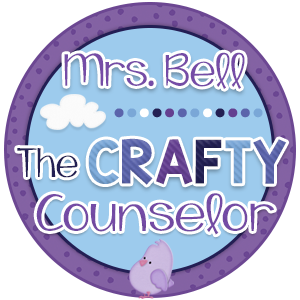20 Free Closure Activities
Closure activities are a great way to end a small group, lesson, or class activity. They help aid in the successful end of a group or lesson while leaving a lasting impression on all students.
The leader of the group/lesson can use closure activities to check for understanding, clear up any misconceptions or misunderstandings, tie up loose ends and highlight key information.
Closure activities benefit group members or lesson participants by allowing them to synthesize and link together all the new ideas and skills learned. It also gives group members time to think and reflect on how they can transfer these new skills across various types of situations and settings.


Closure activities can be done at the end of lessons, as an end to small groups, as a transition, or when you line the class up a bit too early and need to fill a few minutes with something meaningful.
Here are twenty examples of closure activities you can use during your next group and/or lesson:
Elevator Pitch
Have each student sum up all they have learned about the group in a 60-second speech. This is the perfect combination of closure activities and reflection activities.
Snowball Fight
Everyone writes three things they have learned from the group on a piece of paper. They then wad it up and throw to the center of the room. Everyone takes a turn opening and reading each other’s ideas.
So What
Have each student answer the question, What have you learned from this group that will matter to you in one year? In three years? Five years?
Sequence It
Break students into two teams. Give each team one sticky note for each session you had together (six group sessions = six sticky notes). Have students write one thing they learned from each session on each sticky note. For example, on one sticky note, they write that they learned to be friends, on the second sticky they write that they learned how to introduce themselves, etc. In the end, they would have six sticky notes highlighting the lessons of each session. Groups take turns putting each other’s sticky notes in sequence.
Teach a Tot
Have each group member summarize what they have learned from the group in terms so simple a toddler would understand.
Write It
In 200 words or less, have students summarize what they think is the most important lessons learned that day/lesson.
Snapshot
Have students create a snapshot of what they have learned. This can be done using pictures or words.
Movie Release
Have students create a movie poster featuring all they learned that day as if it were going to be a box office hit.
Teach It
Ask students, “What would you say if you were teaching this lesson to students? How would you plan it out and what would you say?” Let students present their versions of the lessons to the group.
Extra! Extra! Read All About It!
Have students create a newspaper article featuring all they learned during the lesson/class/day.
Postcard
Have students write a postcard to someone in a faraway land recapping the lessons learned from the day.
Stand Up/Hands Up/Pair Up
Students all stand up and put their right hand in the air. They move about the room, looking for a partner. Once they find one, they put their hands down. Once everyone has a match, have the students share three takeaways from the day.
This is great when used for closure activities and for practicing speaking with others and utilizing social skills.
Gallery Walk
Have students create a visual representation of all they have learned that day. Hang them around the room and have students check out each other’s understanding and takeaways from the lessons.
2-2-2-2-Doodle
Have students fold a piece of paper in half horizontally, open and fold in half vertically, leaving students with four equal size squares. Pick four key concepts or facts you want students to take away from your lesson. Tell students the first concept and give them two minutes to doodle in one box about that fact or topic. When the two minutes are up, tell students the next concept and give them two minutes to doodle about that topic. Repeat until all four boxes have been doodled in or all four two-minute time intervals have passed.
Ball Toss
Have students toss a small ball to one another. When they catch the ball, they tell one fact they have learned from the lesson/group.
Fishbowl
Have students write one question they still have or something they have learned on a slip of paper. I then have students pull one out at a time and read it to the class. Have them answer it if it is a question and add on to it if it is something they learned.
Lesson List
Have students create a cheat sheet of sorts that highlights all the key topics of the lesson.
5 W’s
Have students explain the who, what, where, when, and whys of the lesson you taught.
Rap It Out
Have students write a rap or jingle outlining what they have learned.
Clock It
Ask the students a question about the lesson and give them 15 seconds to answer. Call on a random student to answer the question and repeat.
Takeaway
The main takeaway I would like for you to have from this blog post is that closure activities should be meaningful and help students to summarize all they have learned. Closure activities should help students to solidify their skills and make sense of all information learned.
Let’s Connect:
- Check out My TeachersPayTeachers Store
- Like Me on Facebook
- Follow Me on Instagram
- Pin Me on Pinterest
- Create With Me on Etsy
You may also like checking out 6 Creative Ways to Get Kids Talking and my Calm Down Strategies Games.
Make sure you check out how I use these closure activities with students after using activities from my Flipbook Bundle or my Interactive Books Bundle.

Read more...
Share it...
You might also like...

Hi, I'm Ashley!
I am a school counselor who helps educators to change the lives of students with engaging, creative, and meaningful SEL resources.







